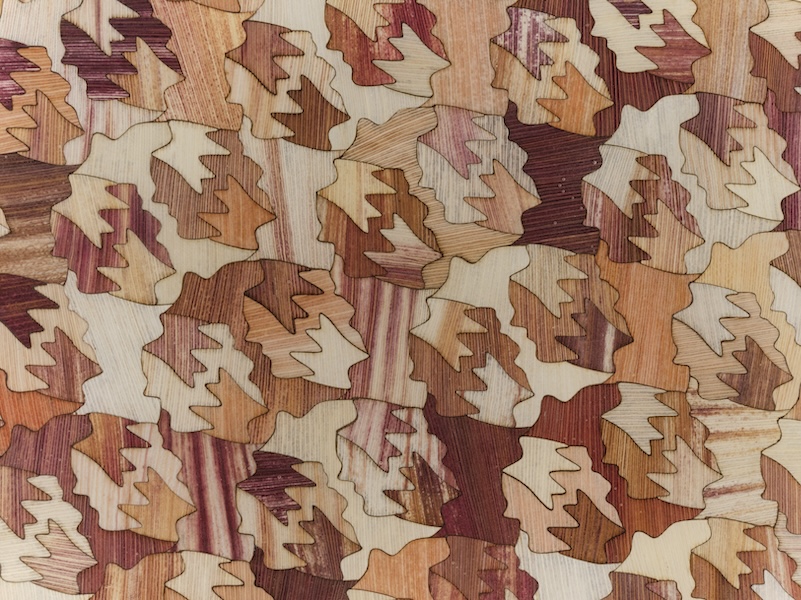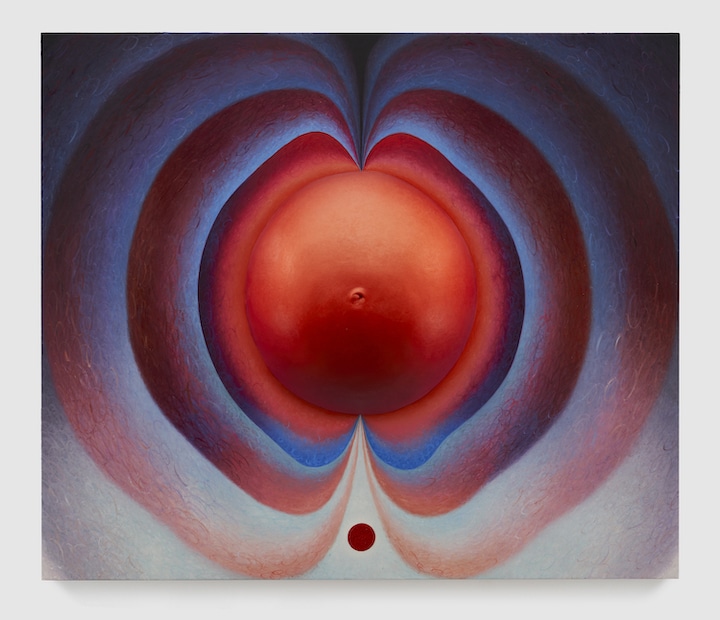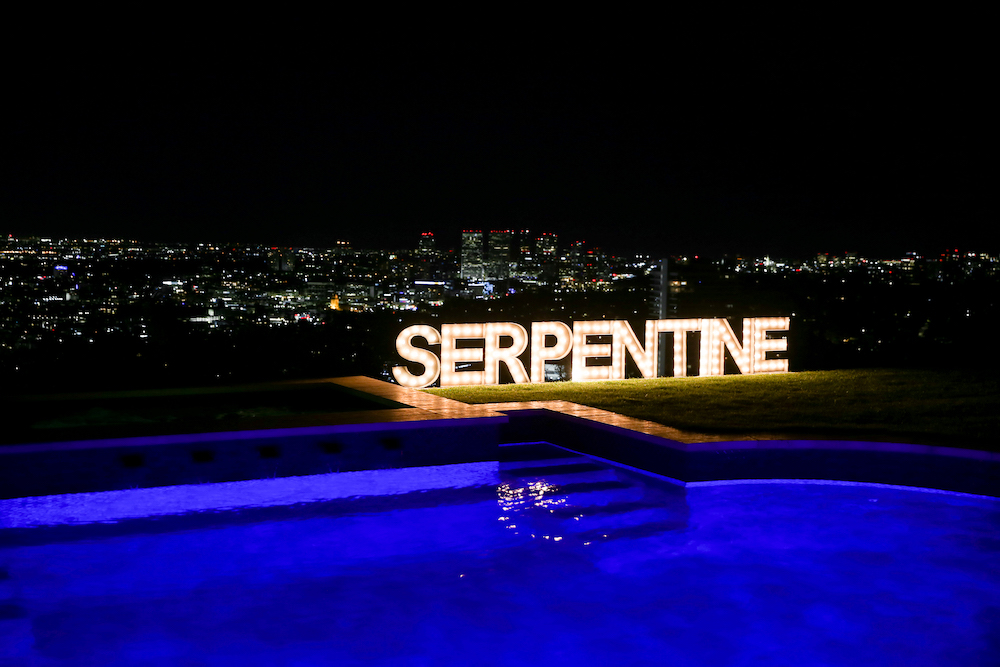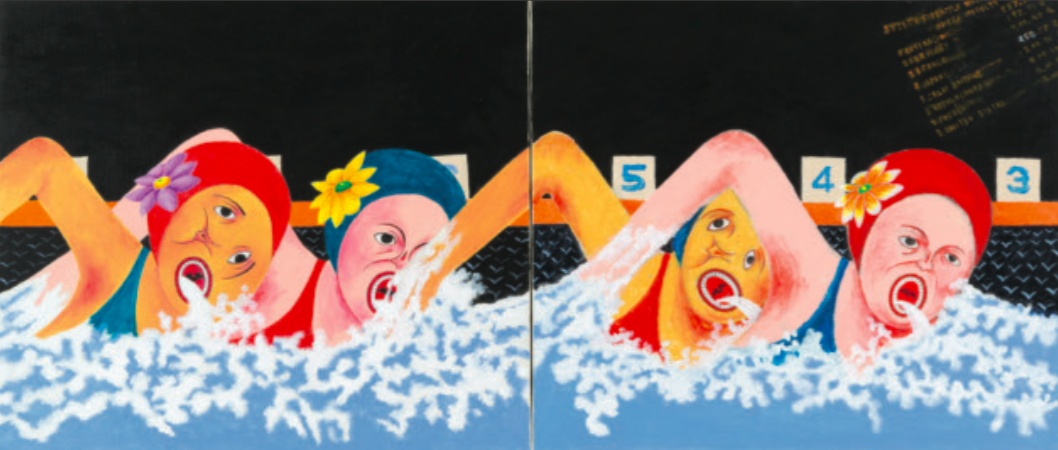Fernando Laposse’s Designs Connect to Landscape and Agriculture
Last fall, Fernando Laposse’s “Ghosts of Our Towns” was on view at Friedman Benda in New York. Included in the show were credenzas and tables made of heirloom corn husk marquetry. There were “Furry” mirrors, chairs, and cabinets crafted from agave fibers. And a chaise upholstered in avocado-dyed cotton was complemented by a series of tapestries featuring figures like Don Emiliano, Doña Lucy, and Saul rendered in avocado and marigold flower dyes.
Laposse’s designs are incredibly inviting in their tactility. They draw us in with the question, what could this material be? When we learn of its origins in corn, agave, and avocado, a deeper story unfolds. Their use is a result of years of research and hands-on agricultural restoration in the small town of Tonahuixtla in the Mixtec region of Puebla, Mexico. There, since 2015, Laposse has worked with the local community to plant heirloom corn, agave to fight erosion, and find long-term solutions for the small farmers of Mexico who have been long exploited by international trade and consumption.
Fernando Laposse Uses Totomoxtle, Cultivated from Seed to Harvest
The artist and designer works with a long-term vision, from seed to harvest, developing techniques to create collectible design that funnels funds back into the project. This winter, he’ll present a monumental, wrap-around tapestry and documentary related to the devastating effects of avocado production in Mexico, at the National Gallery of Victoria (NGV) Triennial, on view through April 7, 2024.
Whitewall spoke with Laposse about how he found himself back in Tonahuixtla after pursuing design outside Mexico for over a decade.
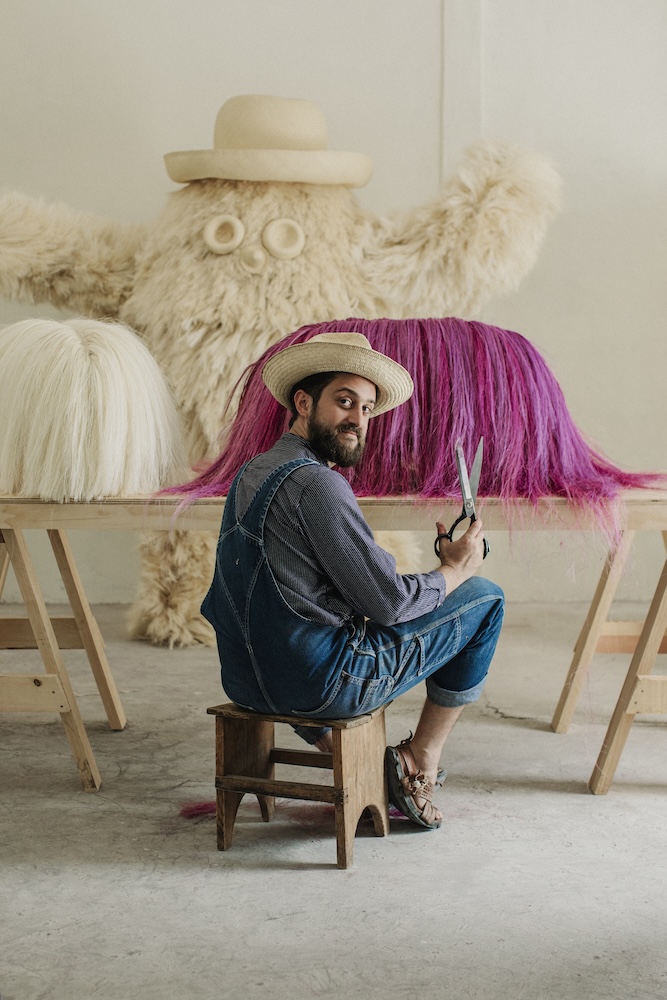
Fernando Laposse; photo by Pepe Molina, courtesy of the artist.
WHITEWALL: How did you come to start your collaborative workshop in 2015 in Tonahuixtla?
FERNANDO LAPOSSE: I studied design in London and I graduated from Central Saint Martins in 2010/2011. I then started working in studios there, with Bethan Wood and Faye Toogood, and I slowly started to set up my practice. It was quite hard to stay in the U.K. without a European passport, so I signed up for a residency in Mexico that was all about food and art at an art foundation started by the artist and activist Francisco Toledo in Oaxaca. One of the many things that he was rallying against was the loss of our native corn.
It was a very interesting time to be there. I had spent more than 15 years outside of Mexico, and so it was a little bit of a reeducation in what was going on. What I noticed was that there was a lot of political work being done regarding GMOs being banned, but that’s just part of the problem. The bigger problem that I saw was the economics behind why these native corns were growing out of use. That’s the business model that big seed companies of the world have put into place. So the work started to be more about what can we do with the native corns to make more money for the farmers.
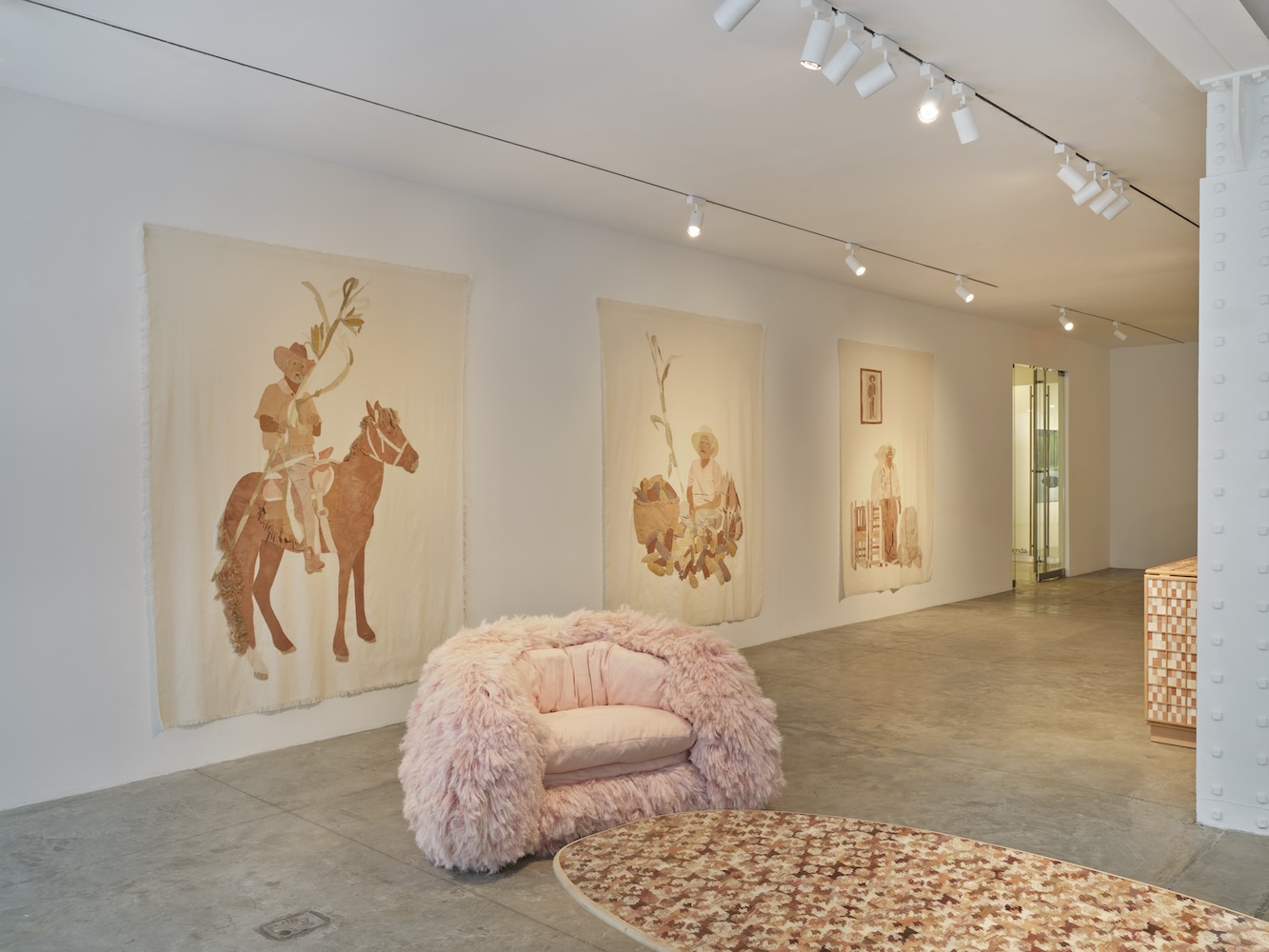
Installation view of Fernando Laposse’s “Ghosts of Our Town,” photo by Timothy Doyon, courtesy of the artist and Friedman Benda.
Fernando Laposse’s Practice Gives Backs to the Land and its People
WW: And from there, how did you arrive at working with the corn husks?
FL: The leaves are colorful like the corn, and I focused my three-month residency on creating with this new material. At the end of that residency, I had a piece that looked very close to what I do now. I tried to start working with farmers there in Oaxaca, and it was quite complicated; people are quite distrustful of people coming from outside their communities, with good reason.
So I decided to go to Tonahuixtla, this village where my family visited every summer growing up. This place doesn’t have Wi-Fi, phones—it was a bit of an adventure, driving through the mountains of Oaxaca to Puebla to this village in the mountains. When I arrived it was super-shocking because the town was completely empty. It was a ghost town. That’s the allusion to the title of the show, “Ghosts of Our Towns.” Our family friend, Delfino Martínez, was there with ten 70-year-olds digging holes and planting agaves in a completely eroded mountain where there was nothing but sand and rocks.
They were essentially trying to create a situation where they could start to revert that erosion—for me that was super-inspiring. Especially because they are in their seventies, so their actions and what they are doing they will likely not see the results. That really put a different dimension to the project. I was like, “Okay, if I’m going to do this it has to go beyond presenting unique material in a design fair. It really has to become something that gives back to this land and this people. And I have to be very careful about how I do that. And if I start promising things, I have to make sure these promises are kept.”
WW: How did the project evolve from there? And how did that influence your designs?
FL: It was a very slow process of beginning that collaboration first, with Delfino and his family. At the beginning, it was really hard to get too much material because our harvest was really small. So that’s why I started to go toward the collectible design world. We could make one or two tables, and that generated enough money to sustain the whole harvest of the next year.
More families started to join, and further down the line we started to continue that reforestation system that Delfino was doing with the agaves, and that started to create the other body of work which is the “Furry” pieces.
It’s all about looking at these projects that are interconnected and circular, and all generate revenue and an interest in the community to care for those mountains and to repair that damage that was done to them as a society, but also their environment around the town.
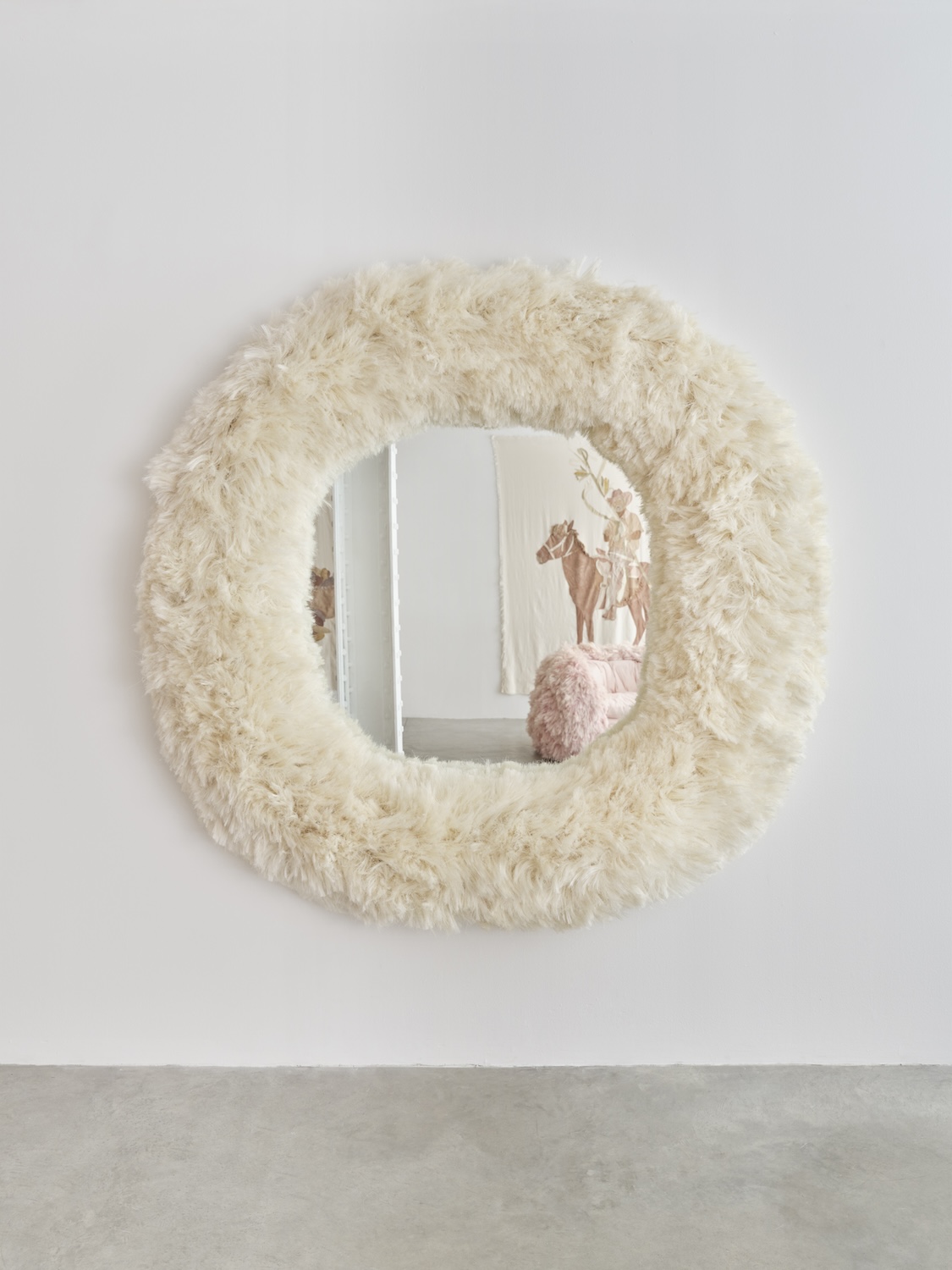
Installation view of Fernando Laposse’s “Ghosts of Our Town,” photo by Timothy Doyon, courtesy of the artist and Friedman Benda.
Human-Centered Stories, Inspired by Biodiversity
WW: You mentioned your “Furry” pieces, which are almost fantastical, and draw us in with the desire to touch. They sort of lure the viewer in, in order to tell the story behind them.
FL: The inspiration for those pieces and why they look the way they look is based on the material. It really looks like hair. It feels like horsehair and it wants to behave like the hair of an animal. So you can’t make sharp corners, you can’t make square things, you have to go for these volumes. Some are heavily inspired as well by a lot of traditional dance, especially from this village and this region where they use hair for their ceremonies—without trying to replicate their aesthetic, without trying to take it directly, it is a little bit of a fantastical thing.
The back story is a big thing for me. I think there are serious stories, and they are hard stories sometimes. And they are very complicated stories. It’s not for everyone, and this is a little bit of a challenge that we have in design where people see design as a purely functional thing. There has to be levels of engagement, and by making them furry and colorful and approachable, you invite people to be curious about the material and to start asking questions. And then you start to gauge who is ready to really understand the full back story.
What I like about design is that, in a way, there is a simplicity that perhaps sometimes art doesn’t have. Art can be intimidating for people who didn’t go to art school or don’t have an education and understanding of art. I see design as a lot more democratic in that sense. And the messages behind my pieces are not terribly conceptual. They are very straightforward. It’s a problem-solving thing. For me, a lot of my work is about diversifying this kind of human-centered design to include humans from another part of the world, outside of the urban focus, that are living traditionally.
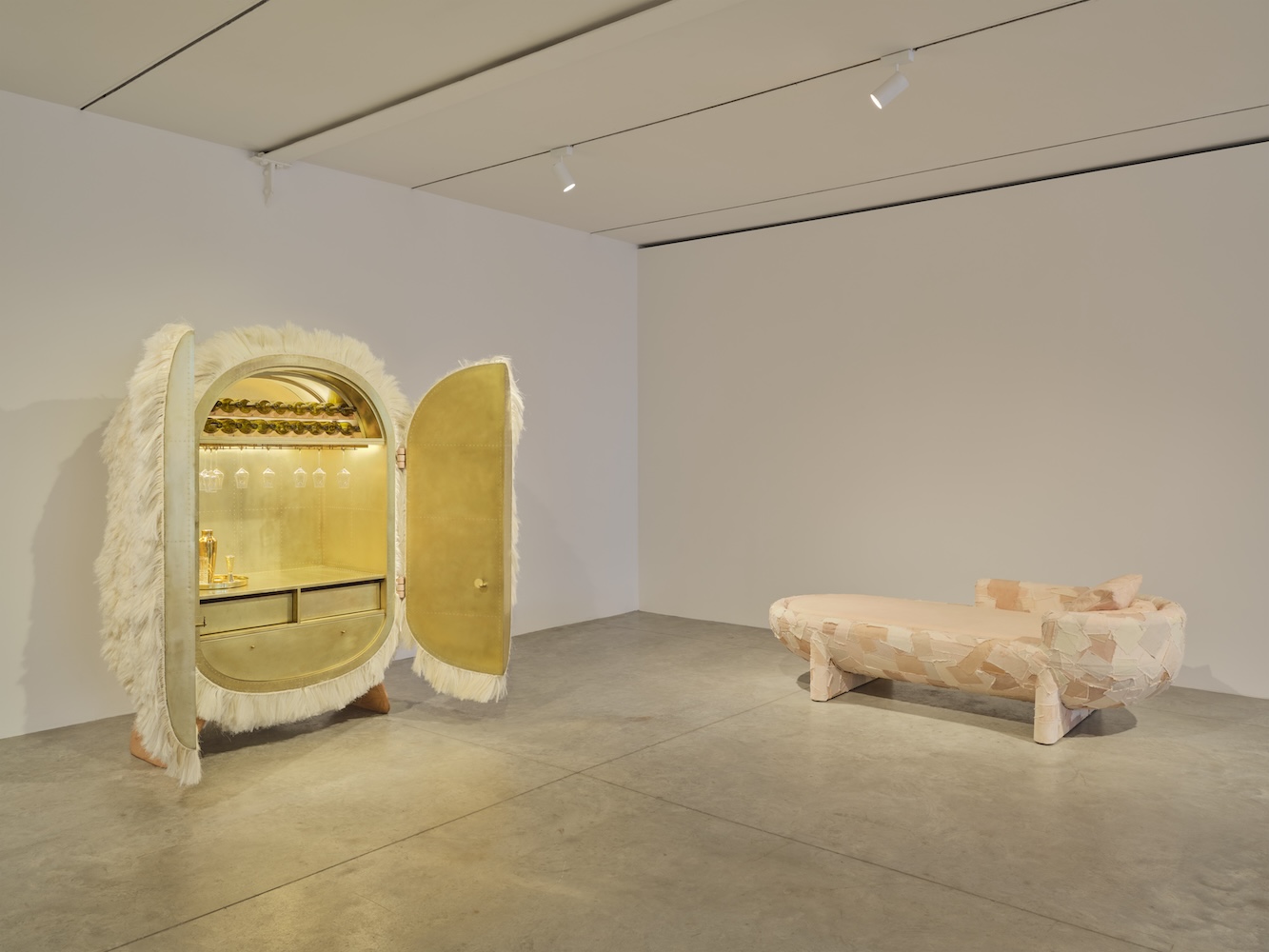
Installation view of Fernando Laposse’s “Ghosts of Our Town,” photo by Timothy Doyon, courtesy of the artist and Friedman Benda.
Fernando Laposse Sheds Light on Rebalancing Ecosystems
WW: Given that you are seeing things from seed to harvest, what is it like to begin thinking on a much different scale of time?
FL: It’s incredible. This year was a really important year to see that as well. Last year we had unprecedented drought. Our corn was okay. Some didn’t grow, but because we planted eight varieties, we did have a harvest. That really showed the resilience of these indigenous strains. And we’re reaching this point where a lot of the agaves are flowering. By now we’re getting close to the 200,000 mark of agaves planted. You have thousands of flowers that get pollinated at night by bats. The bats are going at night to the corn fields and they are completely devouring all of the pests. We’re seeing the beginning of that rebalancing, which is incredible.
I can close my eyes and imagine I’m standing in this field, and I’m also envisioning this fancy show at Friedman Benda with the table next to the couch. I think that’s what’s so lovely about it.


